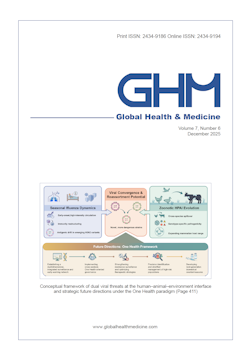Global Health & Medicine 2024;6(5):324-332.
Changes in epidemiological and treatment-related characteristics among newly reported HIV/AIDS cases in an urban area in Shanghai, China from 2001 to 2019: A population-based retrospective study
Lu Q, Xiao S, Yi K, Dai Y, Wang J, Xu F, Yue Q, Ning Z, Shi W, Chen X, Shen X
The HIV/AIDS epidemic has changed significantly over the past 40 years. Changes in AIDS intervention strategies over time and across regions may have influenced epidemiological characteristics and intervention strategies. The aim of the current study was to analyze the changes in multi-year epidemiological characteristics of newly reported HIV/AIDS cases in an urban area (the Fengxian District of Shanghai) from 2001 to 2019 based on the national AIDS comprehensive data information system and Shanghai Statistical Yearbook. In total, the average annual incidence of HIV/AIDS was 1.92 per 100,000 persons. The annual incidence fluctuated and tended to increase from 2001 to 2019 (χ2 = 128.38, p < 0.001). More male patients were reported compared to female patients, accounting for 82.9%. The proportion of patients over 65 years of age increased from 5% in 2009 to 12% in 2019. The majority of cases involved sexual contact (97.7%), early diagnosis (58.8%), full virologic suppression (72.9%), and early antiretroviral therapy (ART) (44.3%). Migrant patients have significantly increased over the years. There were significant differences between local and migrant patients in terms of the age at diagnosis, transmission route, and baseline CD4 count. The disparity in high-risk temporal clusters was also explored to indicate the delay of an epidemic between local patients and migrant patients. HIV remains at a low endemic level. AIDS prevention and control measures have been highly effective, and especially in virologic suppression of ART and early diagnosis. More efforts should be made to enhance early diagnosis and treatment among key vulnerable groups, including the elderly in the local population and young male migrants, and the scale of HIV/AIDS testing should be expanded to the general population to control HIV transmission.
DOI: 10.35772/ghm.2024.01044







